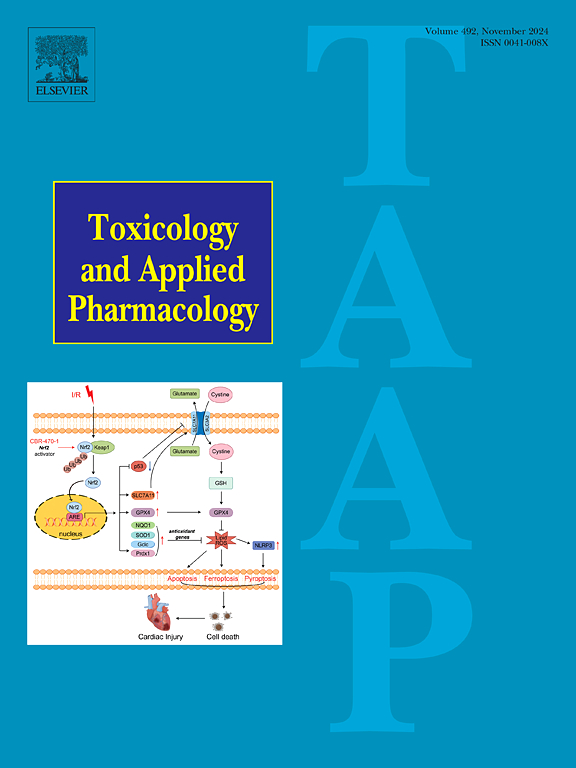Jaceosidin overcomes osimertinib resistance in lung cancer by inducing G2/M cycle arrest through targeting DDB1
IF 3.3
3区 医学
Q2 PHARMACOLOGY & PHARMACY
引用次数: 0
Abstract
Background
Osimertinib is a third-generation Epidermal Growth Factor Receptor (EGFR) tyrosine kinase inhibitor (TKI) widely used to treat advanced non-small cell lung cancer with EGFR mutations. However, resistance to osimertinib frequently develops, limiting its long-term effectiveness.
Purpose
This study aimed to establish a lung cancer TKI-resistant model and identify Traditional Chinese Medicine (TCM) components that could reverse TKI resistance, enhancing lung cancer sensitivity to targeted therapies, while exploring the underlying molecular mechanisms.
Materials and methods
Osimertinib-resistant cell lines and organoids were developed using a dose-escalation approach. A screen of 302 traditional Chinese medicine monomers revealed compounds that increased sensitivity to osimertinib. RNA sequencing and limited proteolysis coupled with small molecule mapping were employed to investigate the molecular mechanisms by which jaceosidin reverses resistance. The efficacy of the jaceosidin and osimertinib combination was confirmed in cell lines, organoids, and a mouse model.
Results
The osimertinib-resistant lung cancer model was successfully established, and 12 compounds were identified that enhanced the sensitivity of resistant cells to osimertinib. Among these, Jaceosidin, a flavonoid compound derived from Eupatorium lindleyanum DC., was confirmed to notably increase osimertinib sensitivity. Mechanistic studies, including limited proteolysis and RNA interference analysis, demonstrated that Jaceosidin directly interacts with Damage Specific DNA Binding Protein 1 (DDB1), promoting its protein expression and downregulating CDK1/Cyclin B1 levels. This interaction induced G2/M cell cycle arrest, thereby sensitizing lung cancer cells to osimertinib. Furthermore, both in vitro and in vivo experiments confirmed that the combination of Jaceosidin and osimertinib significantly inhibited tumor growth in osimertinib-resistant models.
Conclusion
These findings offer new insights into the role of DDB1 in overcoming osimertinib resistance and suggest that combining jaceosidin with osimertinib may serve as a promising therapeutic strategy to enhance the efficacy of EGFR-TKIs treatment in resistant Non-small Cell Lung Cancer (NSCLC).

jacosidin通过靶向DDB1诱导G2/M周期阻滞,克服肺癌患者对奥西替尼的耐药。
背景:奥西替尼是第三代表皮生长因子受体(EGFR)酪氨酸激酶抑制剂(TKI),广泛用于治疗EGFR突变的晚期非小细胞肺癌。然而,对奥希替尼的耐药性经常出现,限制了其长期有效性。目的:建立肺癌TKI耐药模型,寻找可逆转TKI耐药的中药成分,增强肺癌对靶向治疗的敏感性,并探讨其分子机制。材料和方法:使用剂量递增方法开发了抗奥西替尼细胞系和类器官。对302种中药单体的筛选发现了增加对奥希替尼敏感性的化合物。利用RNA测序和有限蛋白水解结合小分子定位研究了jacosidin逆转耐药的分子机制。在细胞系、类器官和小鼠模型中证实了jaceosidin和osimertinib联合用药的有效性。结果:成功建立了奥西替尼耐药肺癌模型,鉴定出12种能增强耐药细胞对奥西替尼敏感性的化合物。其中,紫茎泽兰黄酮类化合物紫茎泽兰黄酮类化合物。证实显著增加了奥西替尼的敏感性。包括有限蛋白水解和RNA干扰分析在内的机制研究表明,Jaceosidin直接与损伤特异性DNA结合蛋白1 (Damage Specific DNA Binding Protein 1, DDB1)相互作用,促进其蛋白表达,下调CDK1/Cyclin B1水平。这种相互作用诱导G2/M细胞周期阻滞,从而使肺癌细胞对奥西替尼敏感。此外,体外和体内实验均证实,Jaceosidin与奥希替尼联用可显著抑制奥希替尼耐药模型的肿瘤生长。结论:这些发现为DDB1在克服奥西替尼耐药中的作用提供了新的见解,并提示jacosidin联合奥西替尼可能是一种有希望的治疗策略,可以提高EGFR-TKIs治疗耐药非小细胞肺癌(NSCLC)的疗效。
本文章由计算机程序翻译,如有差异,请以英文原文为准。
求助全文
约1分钟内获得全文
求助全文
来源期刊
CiteScore
6.80
自引率
2.60%
发文量
309
审稿时长
32 days
期刊介绍:
Toxicology and Applied Pharmacology publishes original scientific research of relevance to animals or humans pertaining to the action of chemicals, drugs, or chemically-defined natural products.
Regular articles address mechanistic approaches to physiological, pharmacologic, biochemical, cellular, or molecular understanding of toxicologic/pathologic lesions and to methods used to describe these responses. Safety Science articles address outstanding state-of-the-art preclinical and human translational characterization of drug and chemical safety employing cutting-edge science. Highly significant Regulatory Safety Science articles will also be considered in this category. Papers concerned with alternatives to the use of experimental animals are encouraged.
Short articles report on high impact studies of broad interest to readers of TAAP that would benefit from rapid publication. These articles should contain no more than a combined total of four figures and tables. Authors should include in their cover letter the justification for consideration of their manuscript as a short article.

 求助内容:
求助内容: 应助结果提醒方式:
应助结果提醒方式:


